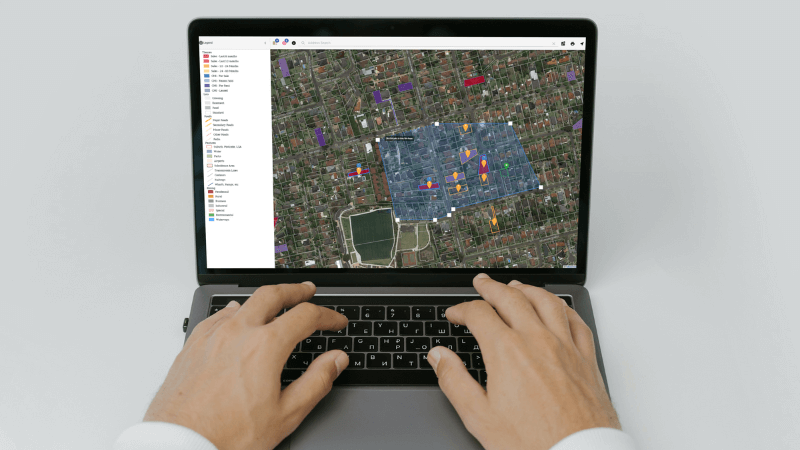As Australians, we love a bit of harmless debate about anything from houses to heroes, a little opinionated verbal argy-bargy — a sausage-sanga-fuelled property and political discussion. In our Barbeque Banter series, we start the property conversation, so you can keep it going!
For years in Australia, arguably a property-obsessed nation, the ins and outs of helping first home buyers into the market, has been a hot topic.
There’s been much debate about investors monopolising the market, foreign buyers cornering specific suburbs, and of course, the impact a cheeky avo on toast has on a twenty-something’s ability to save an increasingly large deposit.
We are a country of people who, in a lot of circles, have genuinely believed that purchasing a home, rather than renting forever, is a right, not a privilege. And why not? Every country has its thing, ours just happens to be property ownership.
In addressing this point of national pride, each election, this issue is inevitably thrust into the spotlight, as politicians rush to temporarily solve problems that were around long before their tenure, and will exist long after.
At the moment, among a plethora of other federal and state-based initiatives, the Home Guarantee Scheme is a government favourite. But as the budget sees the program expanded again, year-on-year, to offer an additional 50,000 first time, family and regional home buyers the opportunity to ‘get a foot in the door’, we have to ask ourselves, is this scheme delivering?
Property supply and demand vs home buyers
As property values have risen over time, and places like Sydney have seen the median house price increase to more than $1.4 million, there’s no doubt saving a deposit is tough.
In fact, if we look at average income compared to that elusive 20% deposit, a first home buyer needs to save three-to-five X their salary just to secure their loan without Lenders Mortgage Insurance.
With cost of living also on the rise and wages just not keeping up, there’s no wonder a lot of youngsters find property purchase out of reach. And though there are some reports of minor corrections in the current market and projected further corrections in the future, the fact is, with the exception of an economic disaster or policy intervention, property prices won’t really drop enough to make buying much more attainable.
So, on face value, allowing first home buyers to avoid lenders mortgage insurance and secure a loan with just a 5% deposit (closer to one X the annual salary), certainly is a notable and useful support.
But when we inject 50,000 buyers into the market who may not have otherwise been there, there’s also the distinct possibility we are driving up buyer-side demand.
Right now, one of the biggest challenges across the property market is the level of demand vs the level of supply – inventory is notably low, there is not enough on the market to go around. So, is driving up demand potentially adding to the problem?
Following the simplest rules of supply and demand, if there is more demand and less supply, how will property values be impacted? Are they really likely to become more affordable? Does that 15% deposit ‘discount’ make enough of an impact or are many first-time buyers just finding themselves back at square one?
Obviously, the answer to the last question is only accurately able to be calculated on an individual basis, but some would argue it does make the scheme — and a buyer-side incentive — a little counter-intuitive.
Do price caps mean first time buyers don’t stand a chance?
If you’ve been glued to the pre-budget news, you’ll know one of the key questions to the Prime Minister has been about the price caps placed on the main federal support schemes available.
- For the First Home Loan Deposit Scheme, in major cities and regional areas, purchase price is capped at $800k, while in more rural and smaller regional areas, buyers need to find a place for under $600,000.
- The New Home Guarantee is capped at $950,000 in urban areas and lower across the region.
- The Family Home Guarantee is also capped at $800,000 in urban areas.
Looking at the demographics of first home buyers, the average age is 36. Notably, the average age of first-time mums in Australia is around 30, and for second time around (or beyond), mums average 32 years of age.
So, by the time people are buying their first homes, many are looking for enough space for a growing family. Needless to say, this only increases demand for houses.
Media has challenged the government, questioning how a person in Sydney (or a young family), where the median house price is over a million dollars, will ever break in, claiming the budget and the caps just doesn’t go far enough.
So, what does the data say?
Diving into the data, at time of writing, we can see in the Sydney region, there are over 570 houses advertised for sale, that fall in under that $800,000 cap.
Of those, there is a small smattering near Burwood, and all of the remaining houses are in west and south Sydney, with the greatest concentrations in and around Campbelltown, Parramatta, and the St Marys and Mt Druitt areas.
Essentially, what that means, is there are opportunities for first home buyers around the Sydney area, that meet the criteria. As expected, however, the eastern and northern parts of the greater city are not really in the mix at all, and this geographic line will likely continue to creep west as values continue to rise.
In regional NSW, at time of writing, there were more than 3,000 houses for sale all the way from Bourke to the southern border. Some areas are obviously lighter on then others, less because of price and more because of localised inventory challenges.
When it comes to sales, we can see more than 1,500 properties were sold in the Sydney area in the month of February alone, and more than 150,000 across NSW, in the country’s most recent ‘normal year’, 2019.
So, while properties are definitely moving quite quickly and agent reports of inventory challenges are rife, there are opportunities for the 25 – 29% of people who are buying for the first time.
The conclusion: does the scheme work?
When it comes to supporting first home buyers, there are a lot of factors to consider and no solution will likely ever be perfect.
Is it ideal to try to influence this part of the market with buyer-side initiatives that potentially result in maintaining inflated pricing? Probably not.
Are the caps reasonable, can people function within them? With a few sacrifices, and a short move away from the beach, potentially, yes.
Does cutting the average first home deposit by up to 15% help buyers who are chasing that seemingly impossible and ever-growing stack of cash, jump that first hurdle? From all the accounts of buyers we’ve spoke to, it definitely doesn’t hurt!
For a summary of budget initiatives that support the property industry, see our article, The 2022 Federal Budget: what it means for real estate.
* www.nhfic.gov.au




